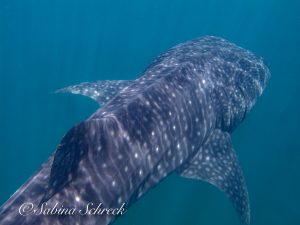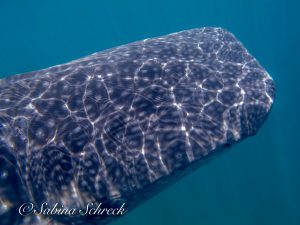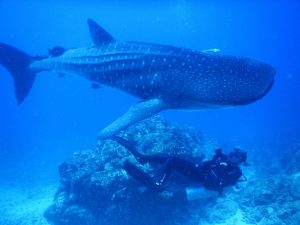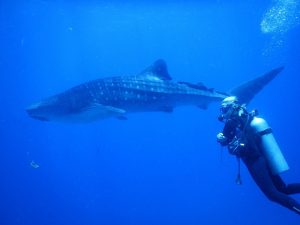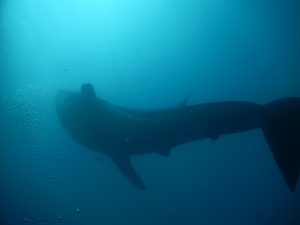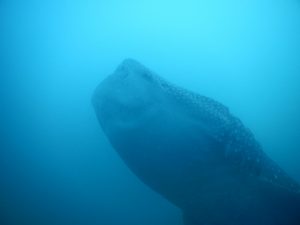Here in Coiba we just can not get enough of rays hanging out with us on our dives with their movements so elegant it often seems like they are flying through water. Lately we have been particularly lucky and seen Mantas on most of our dives – sometimes just for a brief moment but more often than not they hang around for a bit or appear multiple times throughout a dive with every encounter unique in its own way. 
Their colouring in particular on their belly is unique to every individual and allows to identify them.
The name manta originates from the Spanish and Portuguese word “manta” which means blanket or cloak and doesn’t refer to their colouring as one might think but instead to the way they used to be catched. They are mostly found in tropical and subtropical waters making Coiba National Park a perfect place to look for them.
Sometimes you will spot a fish seemingly attached to the manta near its head catching a ride and gaining some extra protection by its giant host. Those fish are called remora or are commonly also referred to as suckerfish as they quite literally suck onto their host. They do not have any negative impact on the ray in doing so, instead this is a special sort of symbiosis and exciting to observe as a diver and sometimes those little guys have been observed to even attach themselves to a diver.
 Those giants reaching a fin span of up to nine meters do not just seem curious and smart – their brains are ten times larger than those of whale sharks and studies conducted in 2016 suggest they might even be able to recognize themselves in a mirror, a sign of self-awareness that is usually just observed in dolphins and certain species of monkeys. So, in a lot of ways those little geniuses like to outperform other members of their class with particularly skills in problem solving and communicating.
Those giants reaching a fin span of up to nine meters do not just seem curious and smart – their brains are ten times larger than those of whale sharks and studies conducted in 2016 suggest they might even be able to recognize themselves in a mirror, a sign of self-awareness that is usually just observed in dolphins and certain species of monkeys. So, in a lot of ways those little geniuses like to outperform other members of their class with particularly skills in problem solving and communicating.
Some of our divers experienced that first hand when a manta ray entangled in plastic approached them. As the group was just getting ready for the safety stop the manta showed up swimming towards the group seemingly looking for help. After a bit of hesitation and back and forth it slowed down swimming at the same speed as the group as if it was realizing it is getting help now and let the dive instructor cut the plastic line it was entangled in. It stayed for a bit before the group surfaced and then swam away  enjoying its freedom once more.
enjoying its freedom once more.
This is encounter adds to the stories that are out there about manta rays and dolphins who found themselves entangled approaching divers for help. It impressively illustrates how smart and communicative these creatures are but once more is a reminder of how important it is to keep our oceans clean and especially avoid plastic and plastic bags.
- By Saskia, Photocredit: Katie and Kat
Sources: https://www.floridamuseum.ufl.edu/fish/discover/species-profiles/manta-birostris
https://oceana.org/blog/manta-ray-brainpower-blows-other-fish-out-water-10
https://divezone.net/manta-ray

